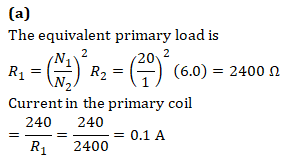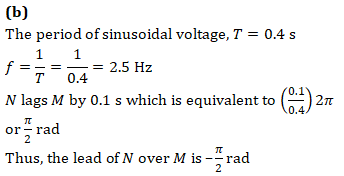JEE Advanced Physics Syllabus can be referred by the IIT aspirants to get a detailed list of all topics that are important in cracking the entrance examination. JEE Advanced syllabus for Physics has been designed in such a way that it offers very practical and application-based learning to further make it easier for students to understand every concept or topic by correlating it with day-to-day experiences. In comparison to the other two subjects, the syllabus of JEE Advanced for physics is developed in such a way so as to test the deep understanding and application of concepts.
Q2. Figure shows an iron-cored transformer assumed to be 100% efficient. The ratio of the secondary turns to the primary turns is 1:20. A 240 V ac supply is connected to the primary coil and a 6.0 Ω resistor is connected to the secondary coil. What is the current in the primary coil?
Q3. A current source sends a current I=i0 cos(ωt). When connected across an unknown load, it gives a voltage output of v=v0 sin[ωt+(π/4)] across the load. Then the voltage across the current source may be brought in phase with the current through it by
Q4. Two sinusoidal voltages of same frequency are shown in Fig. What is the frequency and the phase relationship between the voltages? frequency/Hz phase lead of N over M in rad/s
Q5. In a series LCR circuit the voltage across the resistance, capacitance and inductance is 10 V each. If the capacitance is short circuited, the voltage across the inductance will be
Q6. An rms voltage of 110 V is applied across a series circuit having a resistance 11 Ω and an impedance 22 Ω. The power consumed is
Q7. In an ideal transformer, the voltage and the current in the primary coil are 200 V and 2 A, respectively. If the voltage in the secondary coil is 2000 V, then the value of current in the secondary coil will be
Q8. A 50 W, 100 V lamps is to be connected to ac mains of 200 V, 50 Hz. What capacitor is essential to be put in series with the lamp?
Q9. A typical light dimmer used to dim the stage lights in a theatre consists of a variable induction for L (where inductance is adjustable between zero and L_max) connected in series with a light bulb B as shown in Fig. The mains electrical supply is 220 V at 50 Hz, the light bulb is rated at 220 V, 1100 W. What L_max is required if the rate of energy dissipated in the light bulb is to be varied by a factor of 5 from its upper limit of 1100 W?





















